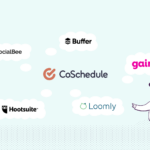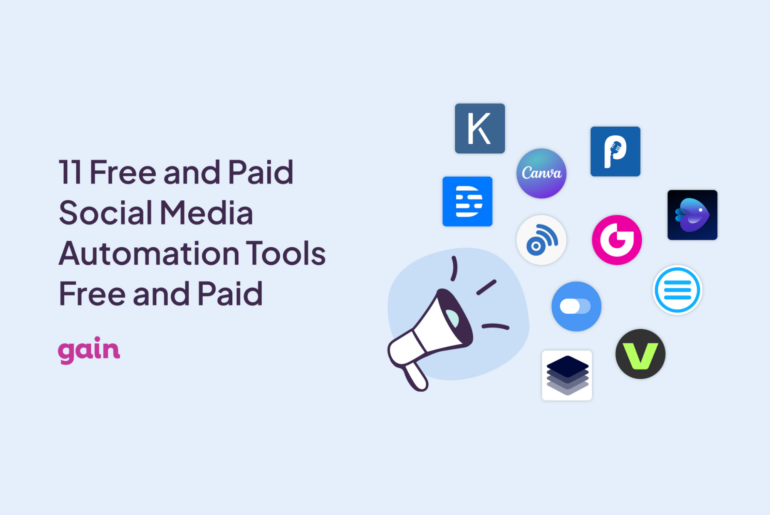Photo by Firmbee.com on Unsplash
Social media is the most prominent digital communication medium today. The estimated number of social media users is nearly five billion, distributed over various social media platforms like Facebook, Instagram, LinkedIn, and TikTok.
This vast market size makes it ideal for business owners to market their products and promote their brands. A study conducted by Statista found that 90 percent of American companies use social media to some extent to market their products effectively.
But, getting noticed on social media isn’t just about posting cool tweets or photos. With so many businesses trying to grab attention, it’s hard to make your message stand out. Plus, what’s trending on social media today might be forgotten tomorrow. And turning those online likes into actual sales? That’s another story.
Businesses everywhere are running into a few common problems when they try to execute their social media marketing plans. Let’s break those down and look at how they can be tackled more effectively.
6 Common Issues with Social Media Marketing Plans and What to Do About Them
1. Lack of Strategy
Many business owners often overlook social media or assume it has the same rules as general advertisements. However, social media strategy is a lot more than just posting a certain number of posts daily.
A well-curated plan should include the format that needs to be used, along with pictures, messages, visuals, and hashtags that align with the core values of a business. Without a proper outline, your content will likely be generic, scattered, and not interesting enough to generate leads.
Solution: Construct a detailed plan that defines the social media content pillars, imagery, messaging, and relevant hashtags that embody your brand’s values. Establish a content calendar to maintain a consistent and engaging online presence that resonates with your audience and promotes brand identity.
2. Not Tracking Results
Most companies fail to follow up on their marketing campaigns by not tracking results. This hinders their growth as they can not troubleshoot problems, observe the audience’s preferences, and identify opportunities. As a result, their marketing efforts remain unspecific and scattered.
Solution: This problem can be remedied easily as most social media networks have built-in features that enable marketers to monitor the progress of each post and check the engagement rate closely. Tracking social media analytics also allows businesses to identify their peak hours and develop content to gain maximum engagement and traffic.
3. Assuming All Social Media Networks Work the Same
Another common mistake in social media marketing is treating all platforms the same, posting identical content everywhere. It’s important to recognize that different platforms attract different age groups and interests, and each one demands a custom marketing strategy.
For instance, YouTube is suited for longer videos or podcasts, while Instagram is better for quick, engaging Reels. Facebook is versatile for text and visuals and is good for updates, while TikTok is all about short, captivating videos due to the short attention spans of its users.
Related Read: TikTok vs. Instagram for Business. Which One is Better?
Solution: To effectively engage with diverse audiences, your brand should create distinct plans and materials for each social network, and employ analytics to refine and optimize the strategy for each platform’s demographic.
4. Poor Market Segmentation
Social media platforms also enable you to identify your target demographics and alter your content to cater to their interests. Marketers can sometimes fail to segment their recipients, resulting in generic content being uploaded on every other social media platform of the brand. This content serves no purpose to the business, as it cannot generate sales effectively.
Solution: Your product or service needs to attract your target audience, and the target audience can be segmented based on age, income, interests, previous purchase history, and engagement with your brand. This way, you’ll know that the right content is reaching the right people.
5. Hashtag Hijacking
Hashtags serve as powerful instruments for boosting visibility and engaging a targeted audience on saturated social media platforms, thereby driving traffic to your content and enhancing brand presence.
Most businesses use hashtags to promote a particular marketing campaign, an upcoming event, or their product or service. Audiences can easily find your posts through hashtags and keywords on Twitter, Instagram, Tumblr, Pinterest, and Facebook.
A common mistake with hashtag usage is leaving a space that allows hashtag hijacking by other brands. Irrelevant social media users may start using your trending hashtag on posts that are not related to your brand, making your product disappear among a sea of numerous unrelated posts.
Solution: To combat this problem, you need to keep your hashtags short and unique for your brand’s needs. You can make your hashtags exclusive by adding the name of your brand or your campaign alongside the commonly used hashtags. This will ensure that your posts appear among potential customers’ newsfeeds and search results.
6. Overreliance on Organic Traffic
Many businesses assume their content will naturally reach a significant portion of their followers. However, as social media platforms adjust their algorithms, organic reach has significantly declined. This means that without a budget for paid promotions, even high-quality content may not get the exposure it deserves, limiting the potential impact of social media efforts.
Every year, more and more companies are investing in social media advertising, with projections indicating that by 2025, spending will surpass $82 billion for product promotions on these platforms. And, although organic traffic proves to be more cost-effective over time, deploying resources into paid media can often deliver quicker and more impactful results.
Solution: To supplement organic traffic, strategically invest in paid campaigns targeting key demographics to boost visibility at critical moments, like product launches or seasonal promotions. Use data analytics to identify the best-performing content and allocate an advertising budget to promote these pieces, ensuring maximum ROI.
Start Implementing Your Social Media Marketing Plan with the Right Tools
For every business in the world, regardless of their size or their industry’s vastness, social media can create a massive impact on their sales. However, their marketing plan needs to be effective, and they require a proactive approach to avoid common issues like poor target audience segmentation, lack of data-driven decision-making, and lack of strategy.
Start by following our tips to improve your marketing plans, and then focus on the implementation part. Having the right tools to create and publish your social media content is as important.
A social media management tool like Gain gives you the ability to create, publish, and monitor the performance of your social media posts across different platforms. With Gain, you can also build bespoke content approval workflows, so that once somebody submits their work for approval, the next person in line is automatically notified that their input is required.
Try Gain at no cost now.






